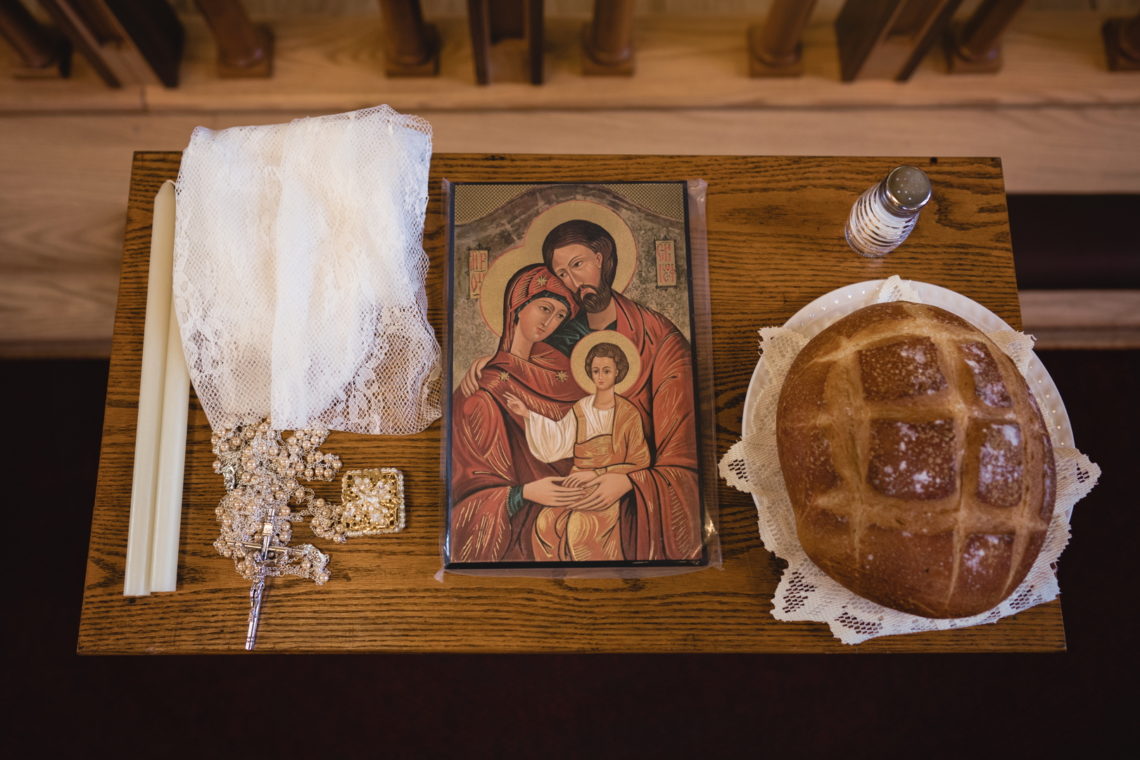
Cultural Traditions in Mixed Catholic Weddings: Uniting Hearts, Ears, and Bellies
People say that summer is the season for weddings, but if you ask me, all the fanfare is better tolerated with a cooler weather. Men’s suits and women’s dresses (usually made of synthetic fabrics) are not as stifling as in the heat, hair and makeup do not melt with the relentless humidity, and throngs of well-wishers feel welcome and not stifling.
I may be biased, since my husband and I got married at the end of chilly November. Our guests had to wear coats, I had a faux fur shawl wrapped around me for outdoors, and our photos, however lovely, captured the moody shadows of that dusky afternoon. It could have been freezing—however, looking back, I was kept warm by the joy of celebrating this occasion with loved ones, the accomplishment of finally pulling this wedding off after months of preparation, and the exciting glimmers of the new, married life that beckoned.
That was almost six years ago… So why am I waxing nostalgic about that day, you may ask?
Well, over those six years, we have attended what is commonly referred to as “mixed” weddings, wherein the bride and groom come from different cultural backgrounds. I have always found these celebrations rather more interesting and meaningful, especially if the man and woman getting married infuse cultural elements into the ceremony and reception. For example, a bride with Vietnamese ancestry wore a gown that was styled with an elegant mandarin collar, and another who came from an Italian family broke glass with her new husband.
Combining traditions
But how do “mixed” couples go about combining traditions?
Believe it or not, it isn’t as simple as having a list and inserting everything where they would fit. That would make for quite a tedious day! More so especially since my husband and I come from a Polish and Filipino background, respectively, and both of us were enthusiastic about our cultural heritage.
A far better strategy would be to consult the Internet, which was what we did, and pick and choose which traditions were important to us. We did have to interview our parents and consult several websites (this was before ChatGPT was mainstream, after all), and we also needed to check with our parish, given that we were having a Catholic nuptial Mass, to make sure the church ceremony remained reverent.
Pre-wedding traditions
One of the most poignant moments my husband and I shared as engaged couple was to have the rite of betrothal. It is a Catholic ceremony that allows the engaged couple to make the promise of marriage before a priest and before God. There is no specific “rite” per se, but had ours at Quebec City, where my spiritual director was assigned at that time, and we were accompanied by our best friends (our best man and maid-of-honor, who were also together) and our parents. We concluded the day by eating out at a restaurant and strolling through Old Quebec. I remember distinctly, however, that the rite of betrothal was not as well-known to our peers, so that despite my blue veil (worn in honor of the Virgin Mary), friends on social media thought we had already gotten married.
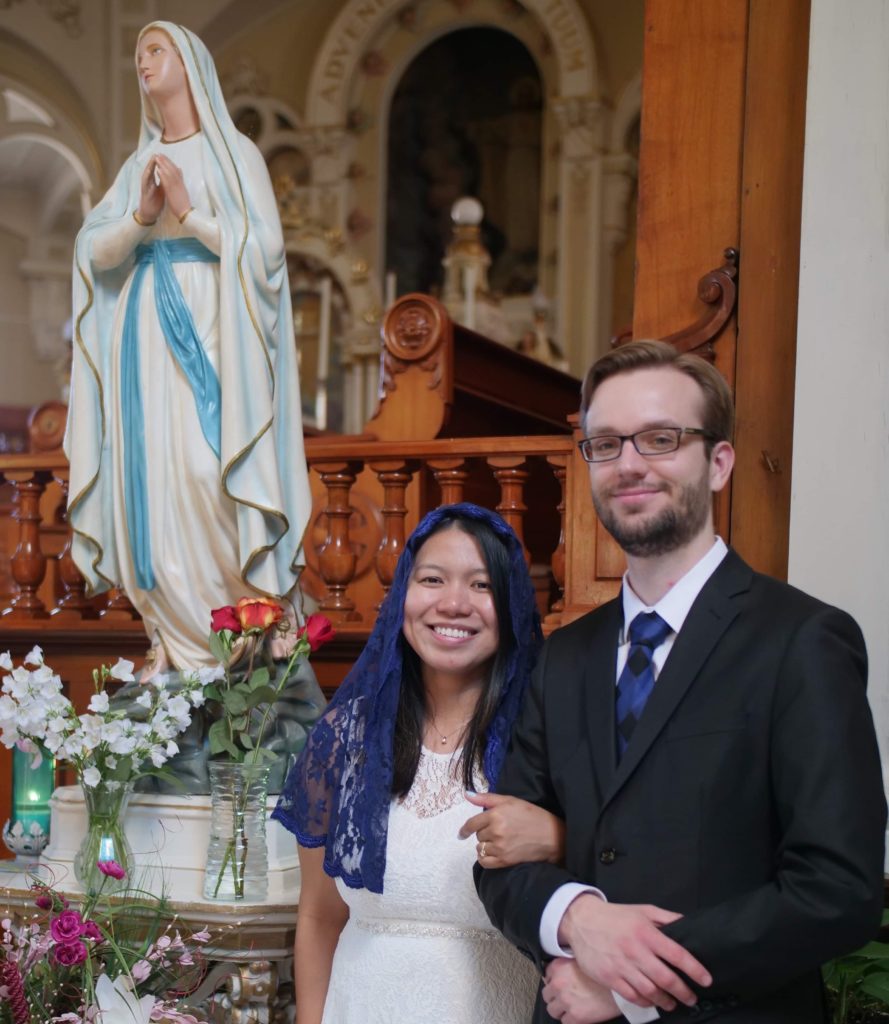
We also had an informal pamamanhikan around the same time, since my parents had flown into town, so both families could meet. Traditionally, it should have been the reverse, since pamamanhikan is a Filipino tradition involves the groom’s family visiting the bride’s family for the former to ask the latter’s hand in marriage. As my then fiancé and I had already been given blessings by both sides of the family, I remember just going to a restaurant to have our family members meet and to discuss some details of the upcoming wedding. Of course, conversation was sprinkled with lots of well-meaning advice from our parents on how to navigate married life!
Filipino additions to the nuptial rites in the Tridentine Mass
My husband and I met at the Latin Mass parish, where we were both parishioners, so we decided to have our nuptial Mass within the Tridentine Mass. It was so much fun deciding on the traditional hymns, and we were very blessed to have a talented choir sing at our wedding. My spiritual director even sang the Ave Maria at the end, when my husband and I were praying in front of Our Lady!
The nuptial rites are in the beginning of the Tridentine Mass, so that technically, we were already husband and wife for the rest of the hour (or two). This extraordinary form of the Mass has stricter rubrics than the vernacular, so I was nervous about adding certain traditions from Filipino celebrations, specifically the wedding cord, veil, coins, and candles.
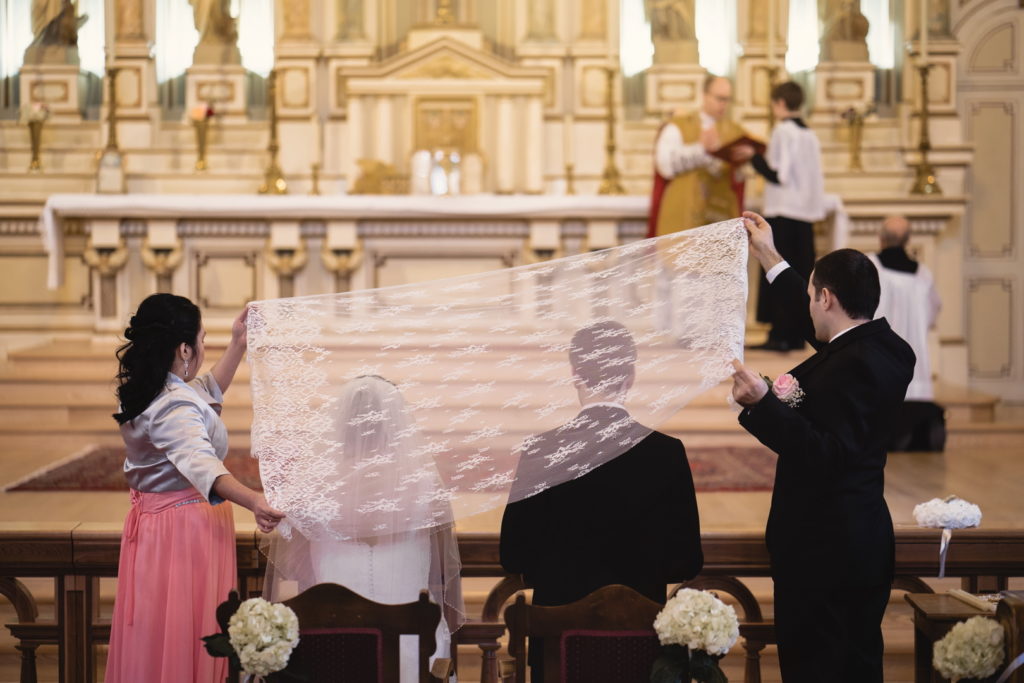
Two small candles and a larger unity candle are lit; these represent the couple and God, respectively, who participate in this marriage. The cord looped symbolizes infinite love, and we actually used a giant rosary for this purpose. The veil, shown in the picture, draped over the married couple’s shoulders signifies humility amid the burden that they are expected to face together. There are 13 coins given, representing Jesus Christ and His apostles, and is a symbol of part of the vows taken: to be together, for richer or poorer.
Filipinos have ninongs and ninangs to assist in the demonstration of these traditions during the nuptial Mass. We chose our ninongs and ninangs (godfathers and godmothers) from individuals who we knew kept striving for holiness and from couples whose marriages we wanted to emulate.
Thanks to the priest who celebrated our nuptial Mass, we were able to include these Filipino traditions in the church ceremony.
Polish additions to the wedding reception
There are many usual Western traditions to wedding receptions, including a first dance by the bride and groom and dances between the bride and her father and between the groom and his mother. We observed most of the usual, including the toast, speeches, cutting the cake, throwing the bouquet, and the dancing afterwards.
But we also elected to include some Polish traditions to the reception, with the biggest one having a second reception the day after, usually a brunch, called poprawiny. I have to admit, however, that in retrospect that was not the best idea for us, since we had to change venues and set up everything all over again. After the late night prior, it was just not the most pleasant thing to wake up early and prepare for another party. We did get to eat more of the delicious food and were able to talk to more people in a calmer setting, so at least that made the whole event worth it. I learned from my husband that poprawiny can last several days, I guess akin to a week-long fiesta in the Philippines.
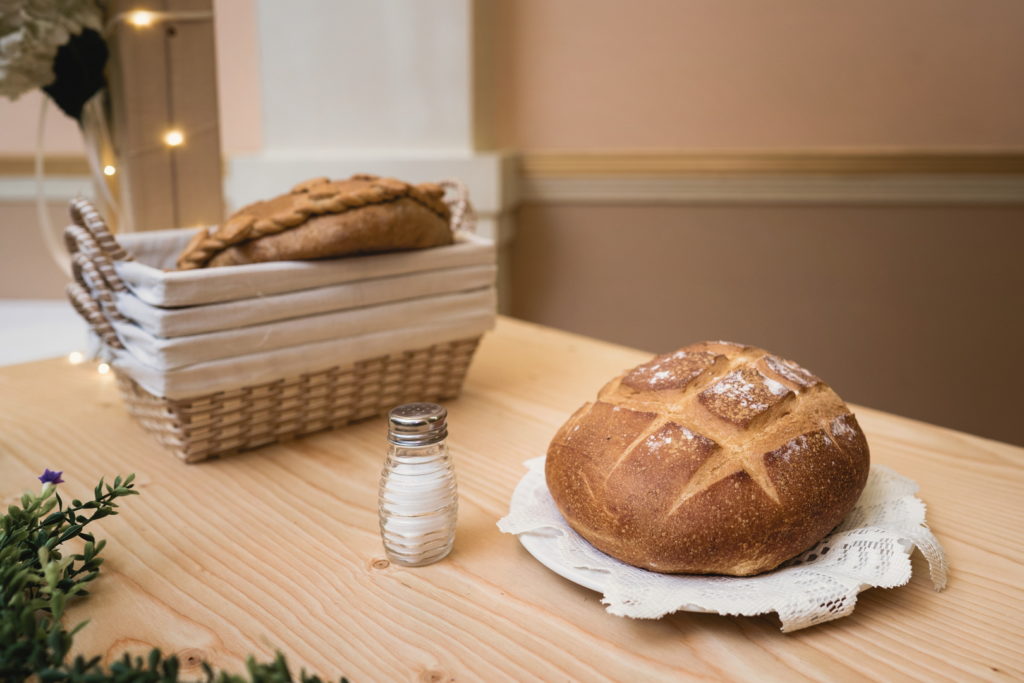
Aside from that second day, we also did the Polish tradition of the groom carrying the bride upon entering the door of the reception (which my husband has to practice many times!), the blessing of the bread and salt, and the oczepiny, in which my veil was removed. The bread and the salt had been blessed during Mass, and our parents welcomed my husband and I into the reception hall with these. The bread was ti symbolize wishes of abundance, and the salt strength to withstand life’s difficulties. (I can say without hesitation that we needed that salt, and maybe a bit more!) And then, right after (although the tradition is to do it close to midnight), the veil I was wearing was removed. This was to symbolize further the transition from a single to a married woman, and I have a vague memory of being able to let my hair down as well.
Other considerations
Another matter that we made sure represented both Filipino and Polish culture was through the food. We hired two caterers for the night: our Polish caterer for the served meals at the table, and the Filipino caterer for after dinner food and midnight snacks. Desserts were very much well sampled from both sides. Furthermore, our best man constructed a beautiful wheelbarrow to showcase Polish cold cuts and cheeses. Our party favors also included familiar Polish and Filipino candies/chocolates.
The dance music also included Polish disco polo hits and catchy iconic Filipino songs, all of which were curated and requested from our DJ. Our invitations were printed in two languages (Polish and English), and we had Tagalog songs sung onstage as part of dinner entertainment.
It’s worth it!
No doubt that planning a wedding is hard work, but I did feel that it was more difficult planning a wedding that tried to respectfully showcase two cultures and yet ensured the solemnity of the nuptial rite in Mass and allowed for joyful frivolity at the reception. I also personally felt that my husband and I learned more about each other’s heritage, as well as just how each of our families did things (which sometimes was an entirely different culture in itself), thereby allowing us to further prepare for our union.
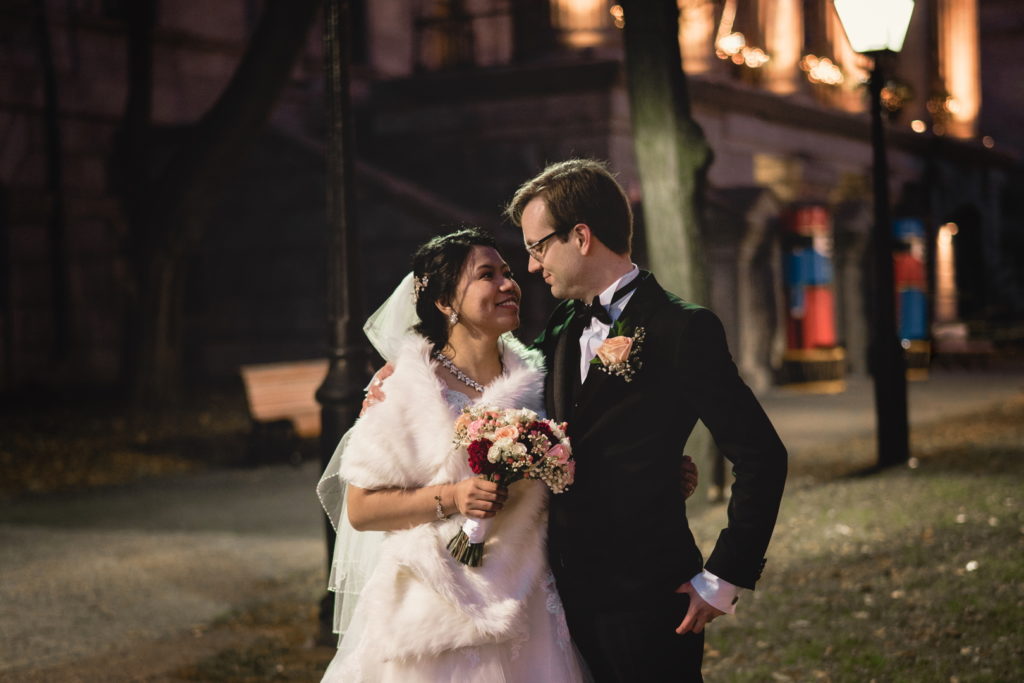
Our wedding day was almost six years ago, but I still have very fond memories of that day. We had almost 200 guests in attendance, mostly Filipino and Polish, but also some who were French and Anglo-Canadians (with their own mixed ancestries). Although COVID hit, and we lost touch with a lot of people through the years (as I suppose was wont to happen with everyone simply busy), we never regretted celebrating that happy day with them and were delighted that they had a great time.
(Of course, now that we have kids, it’s also a lot more work trying to pass on both languages and cultures, as I’ve spoken about teaching Tagalog in a foreign country.)
Despite sorting through more minutiae and far from opting for safe cuisines and trite traditions, I hope that this post has encouraged you to showcase your culture on your wedding day!

